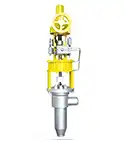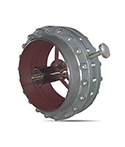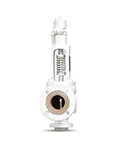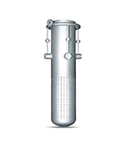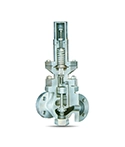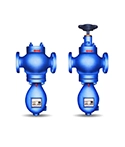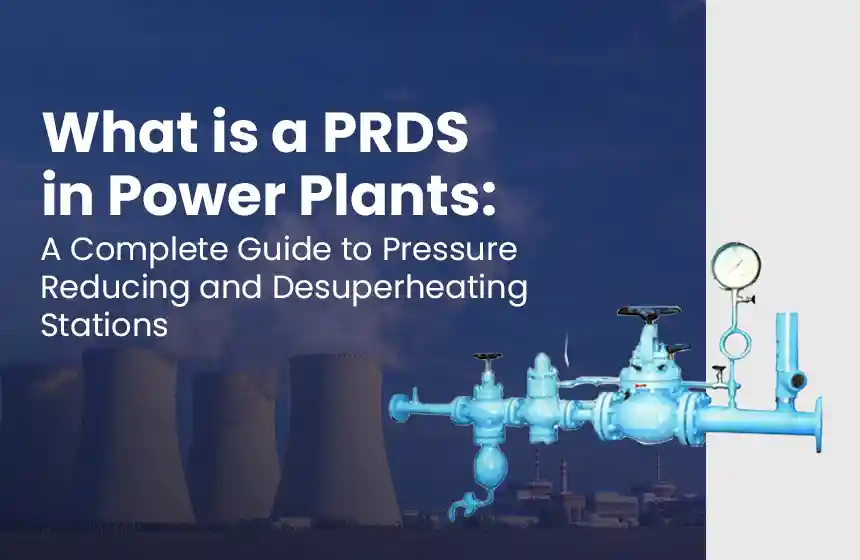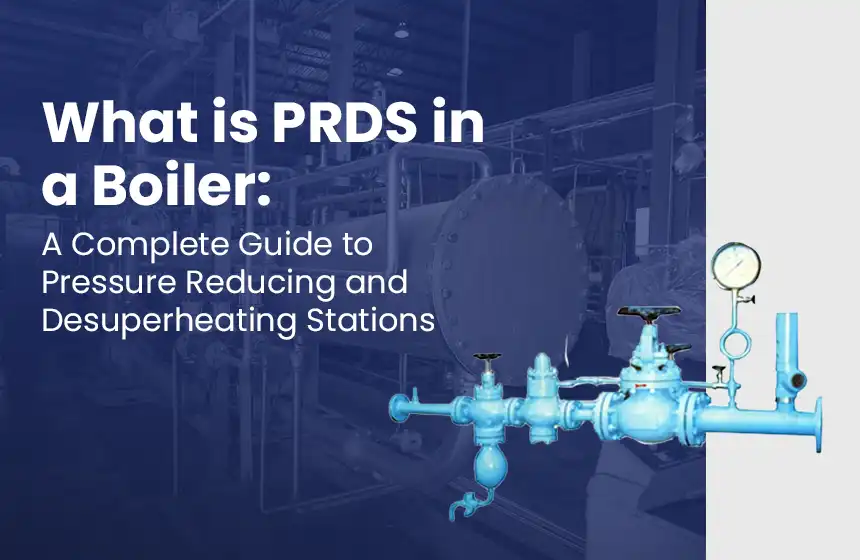
Boiler Safety Valves: Importance, Installation Guidelines & Maintenance Tips
August 1, 2025
A Complete Guide to Pressure Reducing Valves for Oil and Gas Applications
September 4, 2025
Boiler Safety Valves: Importance, Installation Guidelines & Maintenance Tips
August 1, 2025
A Complete Guide to Pressure Reducing Valves for Oil and Gas Applications
September 4, 2025Control Valves in Power Plants: Types, Functions, and Applications
Generally, in power plants, thousands of gallons of water and tons of steam rush through the maze of pipes every second. Therefore, you need proper control so that this power flow does not overheat boilers, damage turbines, or cause shutdowns. In all these, control valves in power plants are useful.
They act as the silent guardians that make the required adjustment and keep the plant running such a perfectly tuned engine. The control valves in power plants ensure a regulated steam pressure or an ideal fluid flow (water, fuel, etc.)in the plant so that each part of the power plant works in harmony.
In this guide, we will understand the types, functions, and real-world applications of this important component. We will also discuss why choosing the right control valve manufacturers can make all the difference. So, let’s get started.
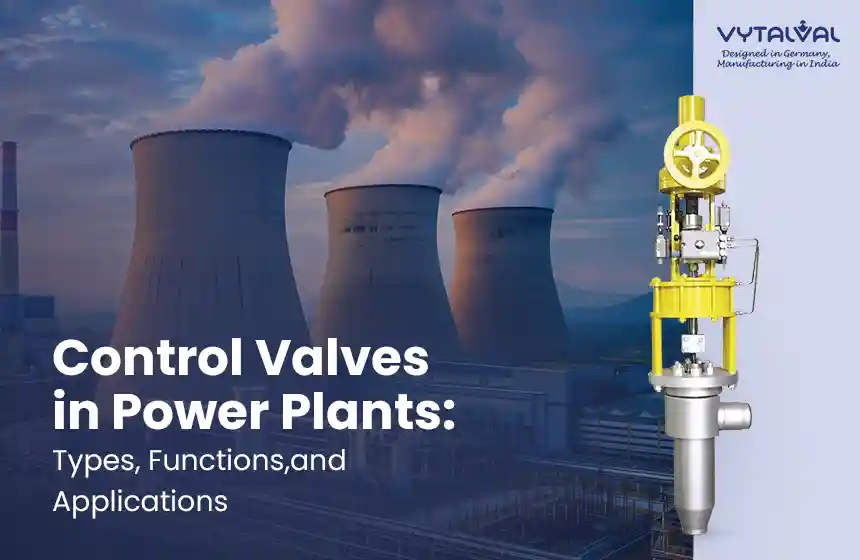
Why are Control Valves Important in Power Plants?
Power plants transform heat into electricity. They either burn fuel or use other energy sources to heat water and produce steam. This stem then spins into the turbine and creates power. After that control valve helps:
- Regulating flow – It lets just an adequate amount of water, steam, or gas pass.
- Managing Pressure – A control valve helps prevent too much force, which could break pipes or tools.
- Controlling Temperature – It sends the right flow to keep the temperature safe.
- Ensuring Safety – The valve quickly shuts down the plants (systems) in emergencies.
- Boosting Efficiency – It reduces waste and saves energy.
For example, in the feedwater system, a control valve ensures that the boiler gets the exact water needed. Too little water can overheat the tube, whereas too much steam can harm the turbine. This valve can keep it just right.
What are the Main Types of Control Valves in Power Plants?
Control valves come in various shapes and designs. Each one is ideal for specific tasks in the power plants. Here are the most common types and how they work in real industrial settings.
1. Globe Valve
In a globe valve, the plug moves up and down inside the valve body and controls how much fluid will pass through it. This valve provides excellent throttling control, which is ideal when flow requires fine-tuning.
2. Ball Valve
In a ball valve, there is a round ball with a hole inside which rotates 90° to open or close the flow. This valve can shut off or allow full flow in an instant, which makes it perfect for quick isolation.
3. Butterfly Valve
In this type of valve, the small disc rotates in the pipe, which helps regulate or stop flow. These valves are lightweight, cost-effective, and ideal for large-diameter pipes.
4. Plug Valve
A plug valve contains a tapered or cylindrical valve which rotates to align its opening with the pipeline, allowing flow, or blocks it when turned. They provide a tight seal and work well in systems that require frequent operation.
5. Diaphragm Valve
The diaphragm valve works as the leak protector. It presses down to block the flow or lifts to allow it through. This valve keeps the fluid completely separated from the moving parts, which reduces the risk of leaks or contamination.
6. Gate Valve
This valve comes with a gate-like disc which moves up to allow full flow or down to stop it completely. They are best to isolate sections of the pipeline during repairs or maintenance without affecting the rest of the plant.
7. Sleeve Valve
Sleeve valves are smooth controllers. In this valve, a sleeve slides to gradually open or close the flow. They offer smooth and vibration-free control for high-pressure applications.
How do Control Valve Work?
Control valves do not move by themselves. They rely on actuators to open, close, or adjust them precisely. Usually, in power plants, there are three main types of actuation methods that are most common.
1. Pneumatic Actuators
They use air. Pneumatic actuators are fast, reliable, and perfect for high-temperature areas where electric motors might fail.
2. Electric Actuators
They use an electric motor to move the valve. These actuators offer precise positioning, which makes them perfect for processes that need accurate control over long periods, like turbine steam regulation.
3. Hydraulic Actuators
Hydraulic actuators are driven by pressurized fluid. They are extremely powerful and often used for large valves in main steam or cooling systems.
When the right valve type is combined with the right actuator, they maintain safe, efficient, and consistent operations even under extreme pressure and temperature conditions.When the right valve type is combined with the right actuator, they maintain safe, efficient, and consistent operations even under extreme pressure and temperature conditions.
If you want to boost accuracy, you need to pair them with the positioners or limit switches. These positioners help fine-tune their movement, whereas limit switches confirm whether the valve is fully open or closed.
Where do They Work in the Power Plant?
Control valves are usually placed at the critical points in the power plant, which keep systems balanced and safe. They are used in the feedwater system, main steam lines, turbine bypass, cooling systems, and isolation for maintenance. When you place the right control valve in the power plant in the right location, power plants can run smoothly, minimize downtime, and extend the equipment's lifetime.
| Control Valve Type | Applications |
|---|---|
| Globe Valve | It regulates the precise amount of water entering the boilers, which ensures steady steam production and prevents overheating in the feedwater system. |
| Butterfly and Ball Valve | In main steam lines, these valves control steam flow to turbines, and globe valves fine-tune pressure for peak efficiency. |
| Sleeve Valve | They are used in turbine bypass to divert excess steam when turbines are offline or when the load drops suddenly. It protects equipment from pressure spikes. |
| Diaphragm Valve | They manage cooling water flow to maintain safe operating temperatures in condensers and auxiliary equipment. |
| Gate Valve | These valves are used for isolation, which either shut off entire sections of piping, allow safe repairs without shutting down the whole plant. |
Why is it Important to Choose the Right Control Valve?
Choosing the right control valve is important to maintain safety. The right control valve can help quick shut off in emergencies to save equipment and lives. Accurate valves = less wasted energy + lower pollution.
Choose the valve that resists heat, pressure, and wear in tough plant conditions. When the valve designs and parts are easily accessible, they can reduce downtime and repair costs.
Wrapping Up
Control valves in power plants are not just another mechanical component; they are the backbone of efficient and safe operation. They regulate steam, water, fuel flow, and protect equipment from damage and maintain stable process conditions across various plants like thermal, nuclear, hydroelectric, etc.
When you purchase control valves from an experienced control valve manufacturer, you can choose the valves that meet your unique operational needs, withstand extreme conditions, and offer long service life. The right control valve keeps energy production safe, efficient, and sustainable. If you’re searching for the best control valve manufacturer, contact Vytal Control today. They stand out among control valve manufacturers for crafting smart, durable, and efficient valves perfectly suited for power generation. So, if you want valves that perform perfectly, protect your plant, and last long, Vytal Control is the best choice.
Vytal Control offers top-quality control valves that keep your power plant running securely, efficiently, and for years to come.


